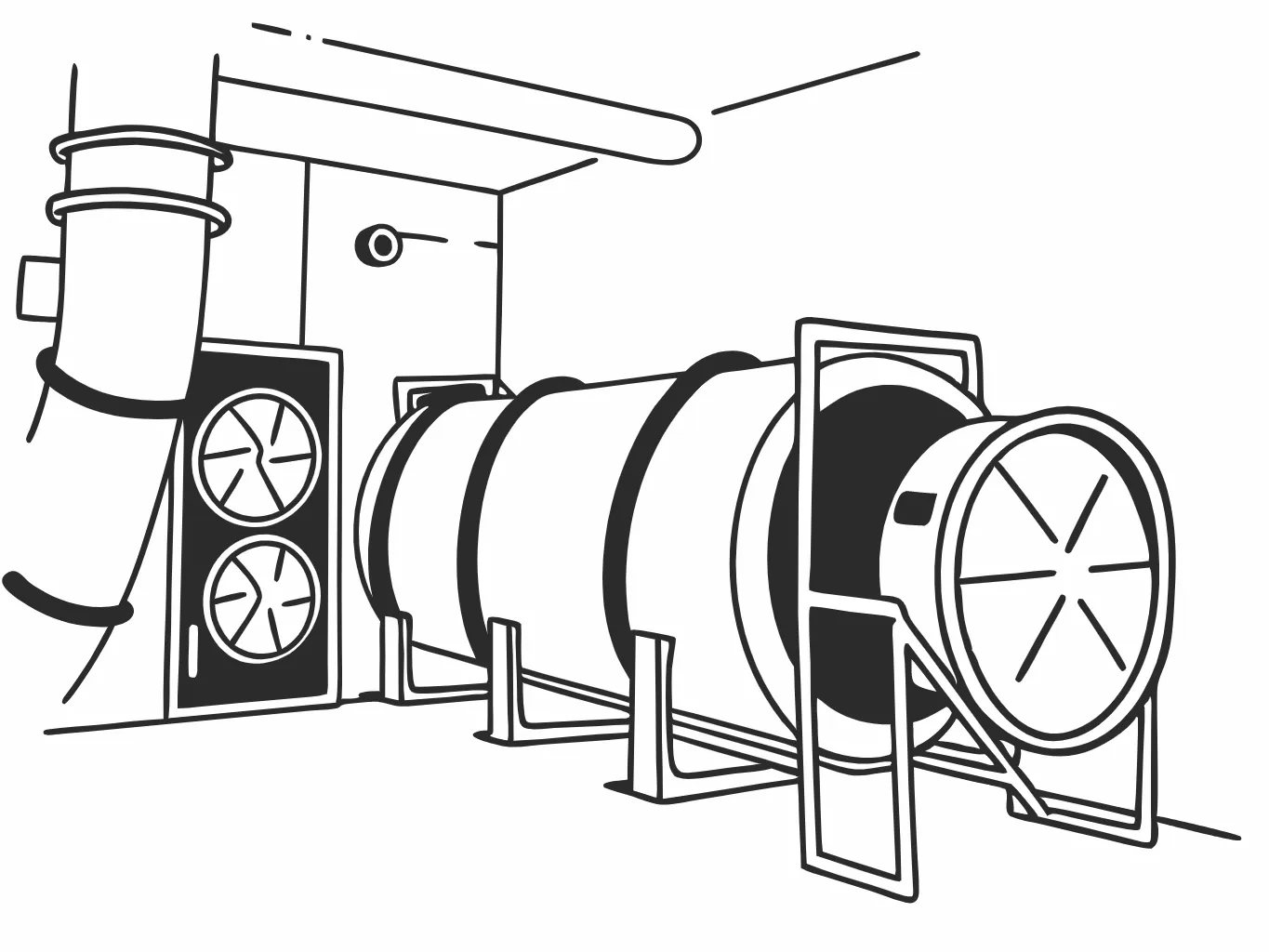Az ipari szárítási folyamatokban a megfelelő módszer kiválasztása jelentősen befolyásolhatja az energiafogyasztást és a működési hatékonyságot. Két gyakori szárítási módszer a mechanikus centrifugális szárítás és a levegőn történő szárítás. Az egyes módszerekhez szükséges energiabevitel ismerete segíthet a vállalkozásoknak megalapozott döntéseket hozni, amelyek optimalizálják mind a költségeket, mind a teljesítményt.
Mechanikai Centrifugális szárítók
A mechanikus centrifugális szárítók centrifugális erőt használnak a nedvesség eltávolítására az anyagokból. Ez a módszer magában foglalja a nedves anyagok forgó dobba vagy kosárba helyezését. Ahogy a dob forog, a centrifugális erő kinyomja a nedvességet az anyagokból, és a dob perforációin keresztül a nedvességet a dobba juttatja.
Mechanikus centrifugális szárítók energiafelhasználása:
- Áramfogyasztás: A centrifugális szárítók elsődleges energiafelhasználása az elektromosság, amely a dobot forgató motort hajtja. Az energiafogyasztás a motor teljesítményétől és a működés időtartamától függ. Ezek a szárítók jellemzően energiahatékonyak, mivel gyorsan eltávolítják a nagy mennyiségű nedvességet, csökkentve a hosszabb szárítási idő szükségességét.
- Hatékonyság: A mechanikus centrifugális szárítók rendkívül hatékonyak a mechanikai behatásoknak ellenálló anyagok esetében. Különösen hatékonyak textíliák, műanyagok és apró fém alkatrészek esetében. A víz gyors eltávolítása csökkenti a további szárítási folyamatok szükségességét, így hosszú távon energiát takarít meg.
- Működési költségek: Bár egy centrifugális szárító kezdeti befektetése magasabb lehet, a csökkentett energiafogyasztás és a gyorsabb szárítási idő gyakran alacsonyabb üzemeltetési költségeket eredményez idővel.
Levegőszárítás
A levegőn történő szárítás során az anyagokat levegővel, akár szobahőmérsékleten, akár meleg levegővel tesszük ki a nedvesség elpárologtatása érdekében. Ez a módszer lehet passzív (természetes levegőn történő szárítás) vagy aktív (ventilátorok vagy fúvók segítségével a levegő keringetése).
Energiabevitel levegőszárításhoz:
- Hőenergia: Meleg levegő használata esetén az elsődleges energiabevitel a levegő felmelegítéséhez szükséges üzemanyag vagy villamos energia. Ez jelentős lehet, különösen akkor, ha magas hőmérsékletre van szükség a kívánt szárítási sebesség eléréséhez.
- Ventilátorok/fúvók áramfogyasztása: Az aktív levegős szárító rendszerek ventilátorokat vagy fúvókat használnak a levegő keringetésére az anyagok körül. Az energiafogyasztás ezen eszközök teljesítményétől és hatékonyságától függ.
- Idő- és térigény: A levegőn történő szárítás általában tovább tart, mint a mechanikus szárítás, ami idővel nagyobb energiafogyasztáshoz vezethet. Ezenkívül több helyet igényel, mivel az anyagokat szét kell teríteni az egyenletes száradás biztosítása érdekében.
Összehasonlító elemzés
- Sebesség és hatékonyság: A mechanikus centrifugális szárítók jellemzően gyorsabb szárítási időt és nagyobb hatékonyságot kínálnak, így alkalmasak nagy volumenű műveletekhez, ahol az idő kritikus tényező.
- Energiafogyasztás: Bár a levegőn történő szárítás kevésbé energiaigényes lehet környezeti levegő használata esetén, a hosszabb szárítási idő és a meleg levegő iránti potenciális igény ellensúlyozhatja ezeket a megtakarításokat. Ezzel szemben a centrifugális szárítók a kezdeti energiacsúcs ellenére gyakran kevesebb energiát fogyasztanak sebességük és hatékonyságuk miatt.
- Anyagmegfelelőség: A módszerek közötti választás a szárítandó anyagtól is függ. A kényes anyagok nem biztos, hogy ellenállnak a centrifugális szárítás mechanikai erőinek, ezért a levegőn történő szárítás jobb megoldás a nagyobb energiabevitel ellenére is.
Következtetés
Az energiafelhasználás összehasonlításakor a mechanikus centrifugális szárítók általában energiahatékonyabb megoldást kínálnak a megfelelő anyagokhoz, gyors szárítási képességüknek köszönhetően. A levegőn történő szárítás azonban továbbra is életképes lehetőség azoknál az anyagoknál, amelyek kíméletes kezelést igényelnek, vagy amikor az energiaköltségek kevésbé jelentenek aggodalmat. A vállalkozásoknak fel kell mérniük sajátos igényeiket, figyelembe véve olyan tényezőket, mint az anyagtípus, a szárítási sebesség és az energiaköltségek, hogy kiválasszák a legmegfelelőbb szárítási módszert.



